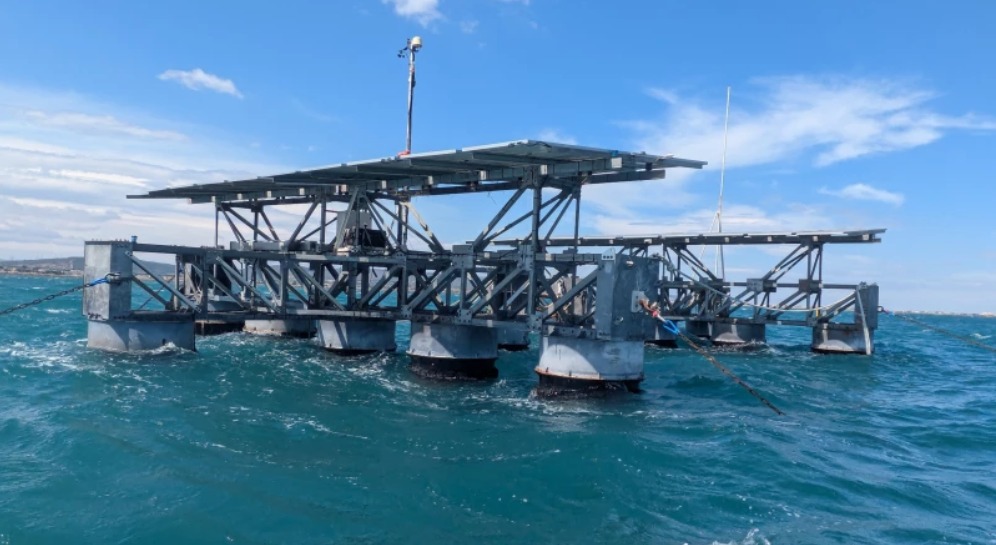
France’s First Offshore Photovoltaic Farm Now Operational Off the Coast of Sète
Since March 2023, France’s first offshore photovoltaic farm—also the first in the Mediterranean basin—has been operational off the coast of Sète. Developed by SolarinBlue, this pilot installation consists of two floating units with a total capacity of 20 kilowatts. The start-up’s goal is clear: decarbonizing the electricity supply for ports, islands, and offshore wind farms.
In December 2023, SolarinBlue was recognized as one of the 40 most promising maritime start-ups at the Maritime Innovation Days. Maddalena Bozzetti, SolarinBlue’s Head of Business Development, shared:
« Being among the most promising start-ups is great news. It boosts our morale and strengthens our motivation to keep going. It confirms that our work is valued at various levels and reassures us that we are on the right track. »
The company is also supported under the France 2030 investment plan.

A Technology Designed for the Marine Environment
SolarinBlue’s offshore photovoltaic farms stand out for their ability to withstand harsh marine conditions, including waves. Their elevated structures protect solar panels from mechanical stress, while the floating units are interconnected to form an elastic mat capable of withstanding waves over 10 meters high.
The operation is straightforward:
- Photovoltaic modules convert sunlight into direct current (DC) electricity.
- The electricity is sent to a floating conversion unit, where it is transformed into alternating current (AC).
- The power is then transmitted via an underwater cable to the shore, where it integrates into the electrical grid.
Overcoming Land-Based Deployment Challenges
Moving solar farms offshore is a logical response to the growing constraints of land-based renewable energy projects. In Europe, and particularly in island regions, land availability is increasingly limited due to competing needs such as housing and agriculture.
« If we are forced to develop only small projects, the economic viability of the technology is lost, » explains Maddalena Bozzetti.
Offshore solar farms are particularly well-suited for island regions, which often prioritize minimal visual impact due to tourism concerns. Unlike offshore wind farms, which require significant port infrastructure, floating solar farms need minimal infrastructure for installation.
« Photovoltaic farms are far more adaptable, with minimal visual impact and lower costs in the medium and long term, » emphasizes Bozzetti.
Next Steps: The « Méga Sète » Project
In 2024, SolarinBlue will launch its next project: « Méga Sète », a floating solar farm with a total capacity of 1 megawatt, replacing the company’s first demonstrator, « Sun’Sète ». The new farm will cover one hectare, producing an estimated 1,300 MWh per year—placing the start-up’s innovation in the spotlight.


